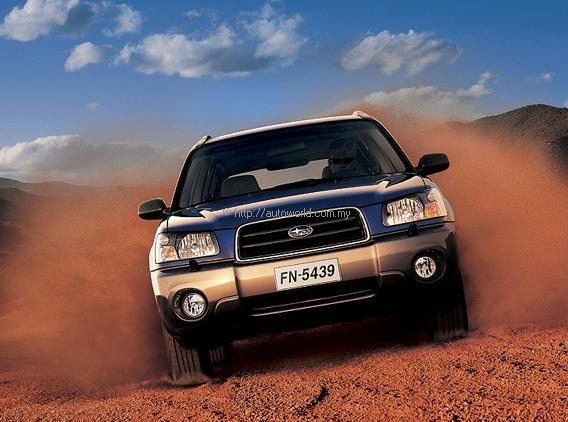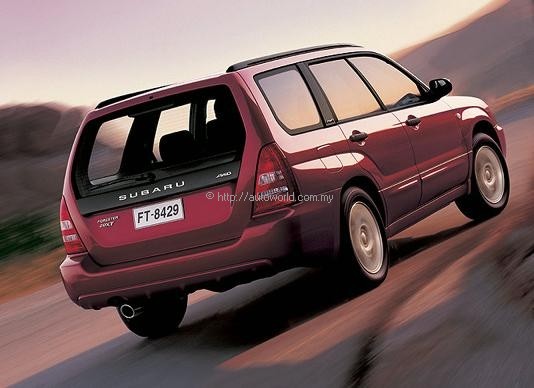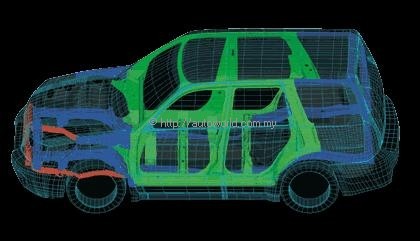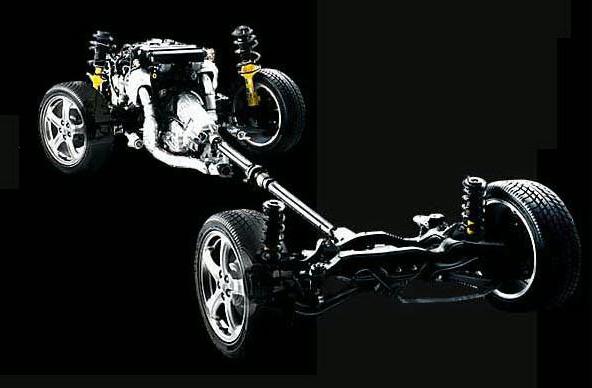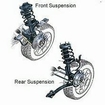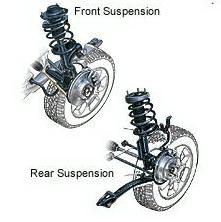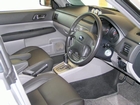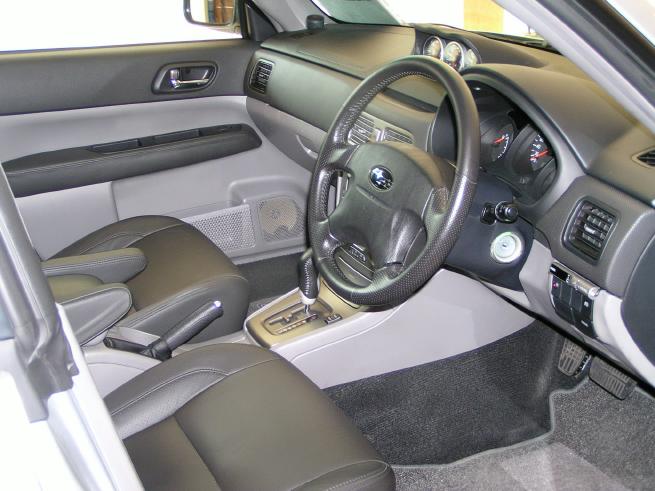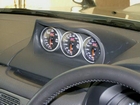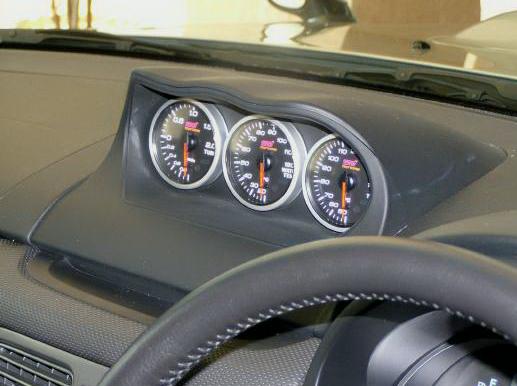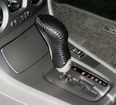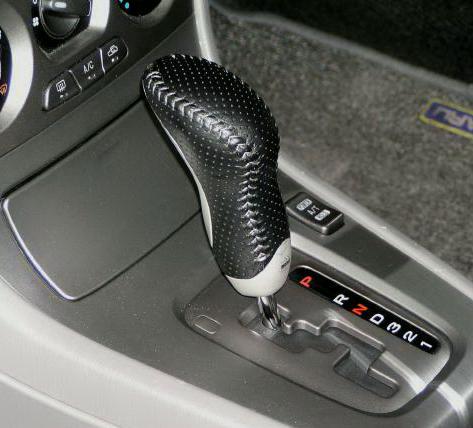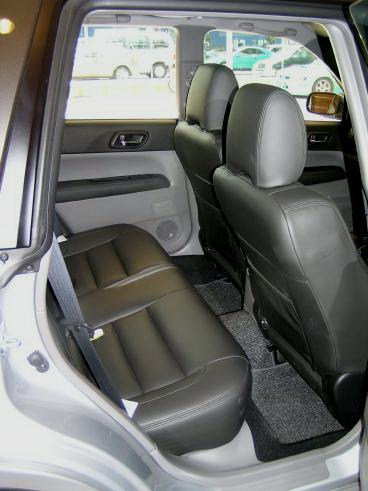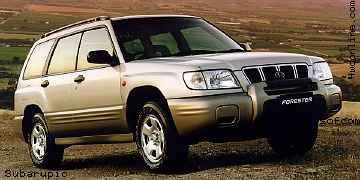New Subaru Forester In Malaysia
Motor Image is launching the new Subaru Forester this weekend, and with a price of RM155,000 (without insurance), it is positioned right in the midst of the small SUV market. In this segment, the lower-priced entrants are models like the Ford Escape and Honda CR-V, both of which are assembled locally, and then you have the Toyota RAV4 and Mitsubishi Airtrek Turbo, and at the upper end, the Land Rover Freelander. And we must not forget the Nissan X-Trail which is supposed to be coming (but Tan Chong seems to not be bothering to talk to the press about it while having all sorts of public promotions).
The new Forester (introduced in Japan 12 months ago) replaces the first generation which was introduced in 1997. In the development of this new generation, the aim was to ‘builds upon the “best of both worlds” crossover SUV approach and enhance the advantages of SUV as well as car characteristics. In doing so, Fuji Heavy Industries (FHI), the maker of Subaru vehicles, aims to offer a vehicle that is ‘ideally suited to every aspect of a user’s transportation needs’.
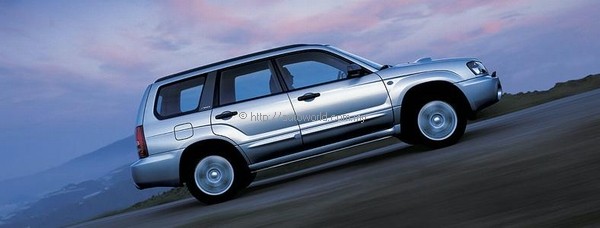 |
The starting point was the bodywork with re-engineering done to increase rigidity and hence impact-absorption and in order not to add weight, aluminium has been used in some panels (eg bonnet). Highly rigid, yet simple, lightweight construction has been made possible by a sound layout of high-tension steel panels and tailored blanks, which are made up of laser-welded steel panels of various thickness. As a result, the new vehicle weighs between 20 – 30 kgs less, depending on whether the engine has a turbocharger or not.
In the 1st generation Forester, the concept of Ring-Shaped Reinforcement Frames as part of a structural body construction was incorporated. This involves having the side panels and the pillars around them connected and reinforced to form rings. This is claimed to be an ideal construction design which, together with subframes, effectively disperses the impact of a collision from any angle and provide even greater cabin safety in the event of an accident.
For the 2nd generation, the passive safety concept is further improved and provides an even better level of passive safety. The improved safety levels are pretty high and evidence of this comes from the fact that the latest Forester scored 5 stars in the Australian New Car Assessment Program (ANCAP) in March this year. Not only does that make it the safest small SUV in Australia, but it’s the first time a Japanese vehicle of any brand has scored 5 stars in the ANCAP, which is comparable to the NCAPs of Japan, USA and Europe.
The superior passive safety, plus the active safety features and the proven Subaru Al-Wheel Drive (AWD) system (a Vehicle Dynamic Control system is also available but it is not known if it is in the version sold in Malaysia) are all going to be very useful to the driver of the Forester. The version sold in Malaysia has the familiar horizontally-opposed 4-cylinder 2.0-litre engine which features a new turbocharger that is more compact and lighter. With improvements that include the addition of an electronic throttle body, it is claimed that the new model’s fuel efficiency is better while torque in low and middle-speed ranges, and acceleration response are also more impressive. The turbocharger spins up very quickly so that low-end performance is enhanced and in actual driving, it is claimed that there will be ‘20 to 30% more driver-experienced torque power’.
Adapted from the engine of the famed WRC Impreza, the engine in the Forester is detuned to suit the vehicle but still develops an impressive 130 kW/177 bhp at 5600 rpm, with 245 Nm of torque at 3200 rpm. That’s not quite Airtrek Turbo territory but it does make the Forester one of the more muscular models in the SUV class.
Combustion efficiency has also been greatly improved through the use of the injector system’s finer spray of fuel, as well as through the active valve control system (AVCS, a VVT mechanism) that optimizes the timing of the intake valves’ opening and closing according to current driving conditions. Friction on various inner engine parts has been reduced in order to enhance performance and lower fuel consumption.
Having produced its AWD system for many years now and having also been a pioneer in 4WD drivetrains among Japanese makers, FHI has a lot of experience now and continues to put it most of its models. In the new Forester, the system has been further improved and refined for lower NVH. The active torque-split system distributes torque to front and rear wheels according to surface conditions to ensure maximum grip for the vehicle and along with a standard rear viscous LSD, the Forester should be exceptionally stable on the road as well as off it.
Manual transmissions are available but given the preference of buyers in this market, Motor Image is only importing the vehicle with a 4-speed electronic automatic gate-type transmission (previously not electronic) which is lighter and operates more efficiently. There is a ‘N-control function’ in the transmission which automatically shifts to neutral when the car has been stopped for some time with its brake pedal pressed. This mechanism further reduces fuel consumption and vibrations.
In addition, an ‘Info-ECO’ mode has been added to the new Forester to facilitate fuel-efficient gear shifting patterns. When ECO mode is selected, shifting schedules and ignition control during idling are adjusted to save petrol. When excessive accelerator pumping is detected at vehicle start-up or during acceleration, the ECO indicator light is switched off to alert a driver to be aware that the vehicle is out of ECO mode. The slip-control lock-up torque converter has also been adjusted to provide lock-up capability at lower rpm than previously, thereby further improving fuel efficiency and reducing vehicle vibrations.
Using experience gained from the successful WRC participation, FHI engineers have been able to improve on the chassis and suspension areas for the new Forester, enhancing the characteristics of the 4-wheel independent strut suspension. Some changes include the use of forged aluminium lower arms and a new type of a damper valve in the front and rear struts, along with a fine-tuned coil spring.
The technical information also mentions better tyres for the new Forester. Specifically, the new tyres fitted in the factory have 10% lower rolling resistance (claimed to not sacrifice grip) and are also lighter. As the Foresters are imported, this would presumably apply to those sold here.
In the area of styling, you may need to put the old and new models next to each other to see how they differ if you are not so familiar with the old one. There are many changes to the styling but the functional form of the previous generation is retained and maintains the Forester identity quite well.
“When developing a new car based on the same, existing concept, it would be unreasonable if outwardly the car appeared completely different. However, if many people do not use the car, we would not be making a social contribution through the car, and the effort poured into development would be for nothing,” explained Hideki Ishido, the Forester’s project general manager. “From this point of view, the design is very important and we have applied ourselves here as well. Outwardly, the Forester was refined by giving consideration to features that remain contemporary. In addition, we made the enhancement of interior comfort a priority.”
One interesting design feature is the way the stationwagon-like body looks low-slung and yet there’s 200 mm clearance below the floorpan. Even the powertrain doesn’t project much and there’s also no transfer case as with the conventional and bigger 4WDs.
The high ground clearance allows the hip point to be at just the right position where a person can comfortably slide into the seat, rather than bend down to make it through the door opening. Furthermore, with the seat height 600 mm above the road, it also makes for a nice elevated driving position that gives a commanding all-round view – one of the main reasons people like SUVs. To ensure a good view, the bonnet angle was changed and so was the roof pillar structure.
The cabin of the new Forester, as would be expected, is conceived for functionality. Having done stationwagons for decades, FHI’s interior designers have a lot of experience and have provided numerous storage spaces (some of them clever ideas too) around the cabin. Needless to say, the cargo area is extendable by folding down one or both backrests (which are divided 60:40) and with the latest generation, some alterations have been made to the top-hinged rear door and some extra height added within.
Motor Image is confident that, with the attractive pricing (RM10,000 less if you book one at the launch in KL on Sunday June 15), the new Forester will be well received in Malaysia, as it has been in many markets. In Singapore, the company has been selling 20 – 30 units a month and it hopes to do at least 100 units a year in Malaysia.




